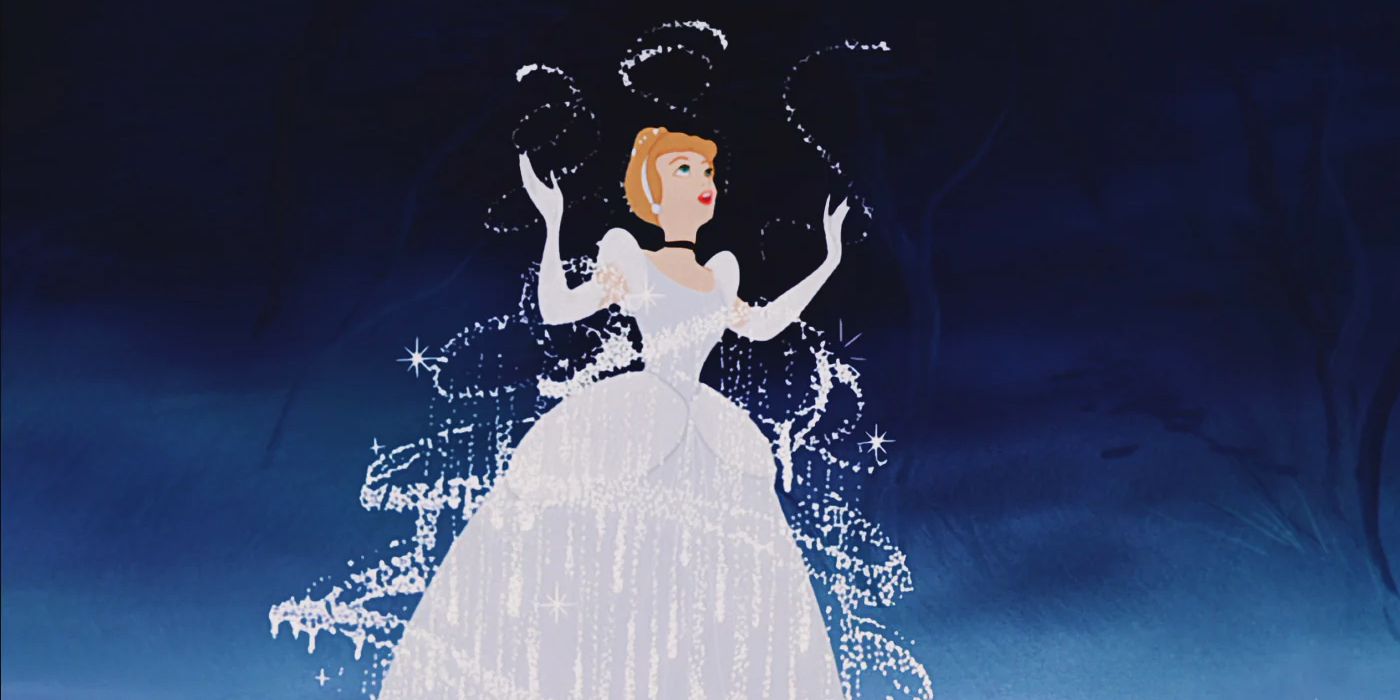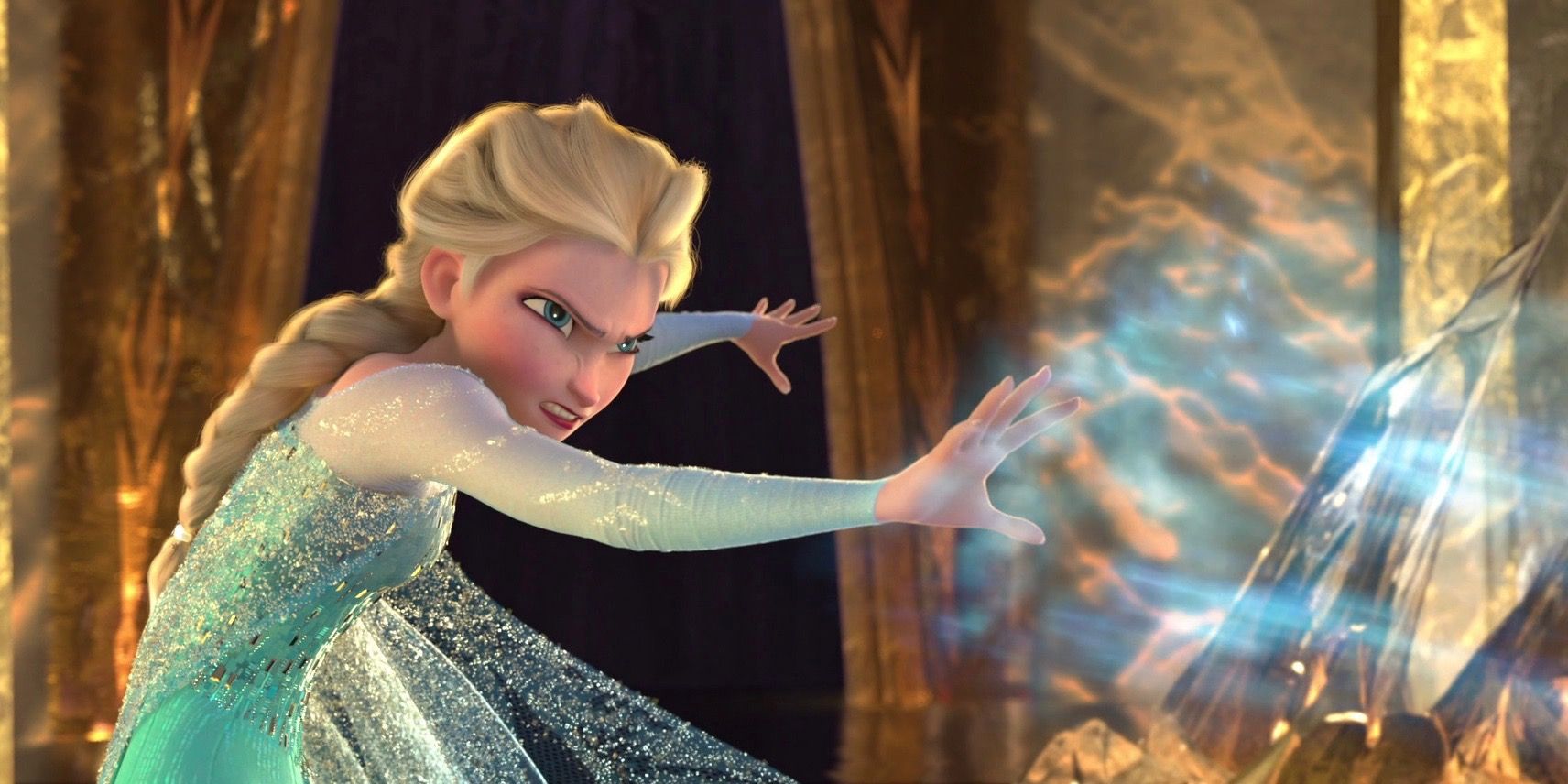Published on September 13, the book Disney Princess: Beyond the Tiara has shed new light on an iconic scene from Frozen. In Frozen, Elsa’s (Idina Menzel) hidden powers over ice and snow are accidentally revealed to the public. To escape the public eye, Elsa runs away to a snowy mountain and sings the famous song “Let It Go.” During the song, Elsa transforms the dress she has been wearing into a shimmering new gown. Disney Princess: Beyond the Tiara reveals that Elsa’s dress transformation is an intentional callback to the dress transformation in Disney’s classic animated Cinderella.
Frozen animator Becky Bresee is quoted saying, “For years I had watched the Cinderella transformation over and over again, and I knew how beautiful that was.” With this callback, Frozen maintains all the beauty, in terms of both the visuals and the underlying meaning, of the original dress transformation. Frozen’s new transformation also changed Disney by embracing the legacy of Disney princesses’ impact while also subverting the classic tropes Disney followed for many years. Elsa’s “Let It Go” dress transformation proves how different the modern era of Disney princesses – from Tangled, The Princess and the Frog, Frozen, and later movies – truly are from the classic princesses.
Frozen’s Let It Go References A Disney Success

The concept of transformation repeatedly shows up in Disney princess movies, whether it is a plain dress transforming into a shimmering gown, a tail transforming into a pair of legs, or a street urchin transforming into a prince (or a beast transforming into a prince). The repetition of this idea is a successful pattern in Disney movies. Transformation denotes character growth in a tangible way that children can more easily understand, while also imparting an important lesson. A core element of Disney’s movie magic revolves around giving children the feeling that anything is possible for their future. With Elsa’s dress transformation, Frozen maintains and uplifts the essential elements of what makes Disney princess movies so beloved, while showing that change is still possible.
Frozen’s Cinderella Reference Is The Total Opposite Of The Original Scene

The key difference between the dress transformations in Cinderella and Frozen is that whereas Cinderella’s Fairy Godmother gives Cinderella her magical new dress, Elsa gives herself her new gown. This marks the difference between the classic Disney movies and the modern ones – Elsa’s self-acceptance and embrace of her own power is a marked shift from the older Disney princesses who are mostly moved through their story by the actions of other characters. The result of this difference is that, because someone else gave Cinderella her new dress, it could be taken away. Elsa’s new outfit, however, as a symbol of her self-affirmed power, remains with her for the remainder of the movie. The Fairy Godmother allows Cinderella to become someone she is not for a few hours, but Elsa becomes who she truly is – which is much more powerful transformation. This updated transformation is also woven into the other movies that helped launch the modern era of Disney princesses. For example, in Tangled, Rapunzel is transformed by having her magic hair cut off, which is a fitting end to her story, as she discovered throughout her story that she can be a self-empowered person, not just a vessel for the flower’s magic.
Frozen’s dress transformation, as compared to the Cinderella dress transformation that it references, shows just how much Disney modernized its movies and gave its princesses more autonomy and power. To successfully usher in a new era of Disney princesses, Frozen (and the other early modern Disney princess movies) had to retain every essential part of what makes the princesses so meaningful, and it did so. While maintaining every core Disney success, Frozen helped create a new measurement of success for Disney movies: autonomy for the central female characters.




